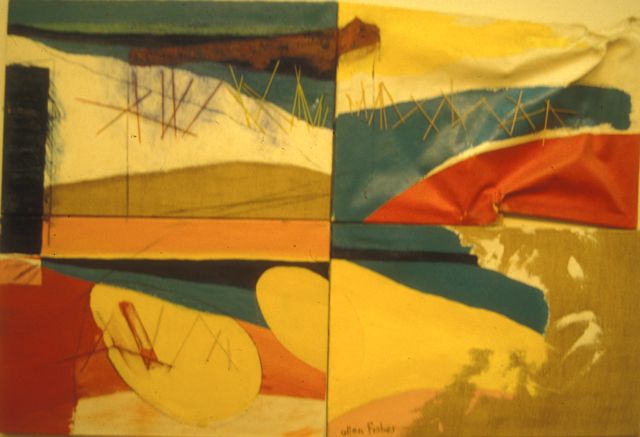How important is breath for thinking and writing space?
What is the sound of breath? Is breath noise?
How do we write it?
John Cage‘s 1951 visit to the anechoic chamber at Harvard changed his relationship to thinking and listening and subsequently to a redefinition of music as environmental sound which is most famously in his piece 4, 33. An anechoic chamber is a room designed to absorb sounds, rather than reflect them as echoes and it is also sound proofed against external sounds. While in the chamber Cage heard two sounds which he was later told were the sound of his nervous system and his blood in circulation. One can only presume that he was also intensely aware of his breath.
 Anechoic chamber at the harvard acoustics research laboratory.
Anechoic chamber at the harvard acoustics research laboratory.
What is the relationship of breath to language? Isn’t language a little like breath in that we often use it without thinking much about it? How can we become aware of the language of the everyday in the same way that Cage became aware of the possibilities of silence?
Breath is also clearly central to Charles Olson’s ‘Projective Verse’ manifesto when he writes:
“Verse now, 1950, if it is to go ahead, if it is to be of essential use, must, I take it, catch up and put into itself certain laws and possibilities of the breath, of the breathing of the man who writes as well as of his listenings”
The relationship between his own breath and the writing of space and place is evident throughout the pages of Maximus , especially in his use of white space and composition by field but it is also there in performance.
Charles Olson reads Maximus to Gloucester, Letter 27 [withheld] (Mar 1966)
For Olson to “come back to the geography of it,” is to return to questions of writing in relation to a body in space. And is allied with a redefinition of an American poetics that is specifically apart from Classical traditions.
‘Maximus to Gloucester, Letter 27 [Withheld]’
What does it mean to write the specificities of breath and space in relation to other kinds of bodies perhaps sited, gendered, defined and identified differently than Olson?
How can we begin to do this in relation to the room or space in which we find ourselves?
Here are two very different examples of work that engage with some of these ideas and open the possibilities of the poem towards installation and performance.
Allen Fisher Chest Breath 1978, (first issued as a Typical Characteristics cassette recorded by erik vonna-michell) played against a photograph of Kessingland by Allen Fisher, oil and charcoal on hessian and cotton with I Ching sticks, four panels, 1978.
The different components of the installation involve us in a network of references that begin to play out from semantic echoes and slippages between chests and chestnut trees. Bodies and trees breathing in as exterior and interior landscapes merge and remerge. By placing the deformed recording of the poem in relation to the object of the photograph of the painting, Fisher’s ‘Chest Breath’ sets up a triangulation between writing and listening and seeing that involves the audience in considerations of their own positionality. How would they see, hear things differently from another point in the room? From another moment in time? In another body? In another landscape?
By contrast Anne Waldman’s Makeup on Empty Space uses seriality and repetition to build up an incantory transformation of space in the duration of performance or time of reading. Each is open to the possibilities of erasure, loss and return as a mode of considering how we might write the body in and through space.
Invitations to Write:
Write for 15 minutes in full consciousness of your body in the act of breathing.
Change your position in the space that you are in and repeat the exercise. You might like to sit or lie on the floor. Look out of a window. Try to notate the space around you in relation to your breath. How does this begin to shape the way you write? Does it lead to longer / shorter lines or perhaps gaps on the page?
Consider writing your own proposal for a series of actions for spaces.
